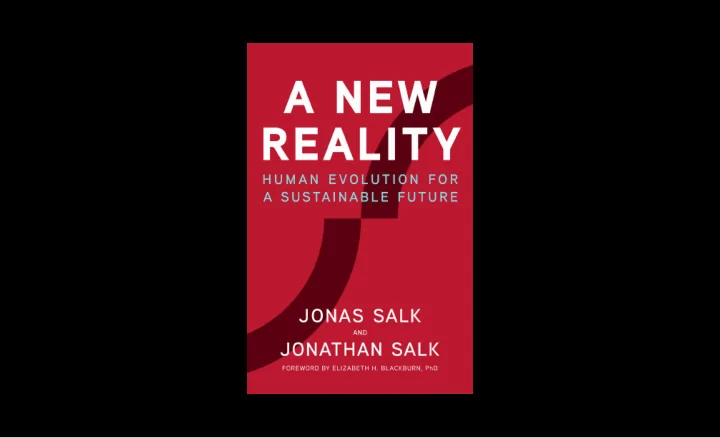

A vision of hope for a world in transition
Jonas Salk’s wish was Jonas Salk’s wish was that his ideas would that his ideas would continue to be disseminated continue to be disseminated so that, like a vaccine, they so that, like a vaccine, they might have the most positive might have the most positive effect on the greatest effect on the greatest number of people. number of people. JONAS SALK 1954 JONAS SALK 1954
part one Sigmoid Curves
In this essay, the sigmoid curv as a “thinking tool” and as a s refmects a pattern that applie living systems and refmects character of change in our time.
In the fjrst, upturned portion of the curve, population growth follows a pattern of acceleration;
in the second part, growth decelerate a plateau is reached.
The gap in the curve empha the point of infmection change from accelera decelerating growth.
250 250 200 200 number of flies number of flies 150 150 100 100 50 0 50 8 12 16 20 24 28 2 6 10 14 april may 0 8 12 16 20 24 28 2 6 10 14 april may Fruit Fly DROSOPHILA MELANOGASTER DROSOPHILA MELANOGASTER
part two World Population Trends
CURRENT WORLD POPULATION IS 7.4 BILLION From the beginning of the Common Era, CURRENT WORLD POPULATION IS 7.4 BILLION the size of the human population grew 7 7 gradually for about 16 centuries and then with increasing speed through the nineteenth century. The gradual but 6 progressive acceleration was followed 6 by a sudden steep rise in the twentieth century—a consequence of the scientifjc- technological-industrial-agricultural 5 5 revolutions, which have had the efgect of making it possible to sustain a human world population in billions population far larger than ever before. 4 4 3 3 2 2 1 A.D. 200 400 600 800 1000 1200 1400 1600 1800 2000 A.D. 200 400 600 800 1000 1200 1400 1600 1800 2000
The sharp increase in the size of human population in r raises the reasonable que Will the curve continue to rise at its present r
Will it crash?
Or will it bend and a a sigmoid shape?
12 11 10 9 world population in billions 8 7 6 5 4 3 2 1 1850 1910 1930 1950 1970 1990 2010 2030 2050 2070 2090 2110
12 11 10 9 world population in billions 8 7 6 5 4 3 2 1 1850 1910 1930 1950 1970 1990 2010 2030 2050 2070 2090 2110
Why does population growth slow?
11 2.0 10 9 8 1.5 word population in billions percent increase per year 7 6 1.0 5 4 3 0.5 2 1 6000 BCE 4000 BCE 2000 BCE 0 2000 CE 4000 CE 6000 CE 8000 CE 10,000 CE
part three A New Epoch
epoch b epoch a
epoch b epoch a
limits conservation sustainability a b no limits consumption waste
collaboration interdependence consensus a b competition independence power
dynamic equilibrium a b persistent expansion
both / and win - win a b either / or win - lose
part four Paradox and Conf lict
epoch b epoch a pragmatic pragmatic or and humane humane
Generosity serves Self-Interest
b values a values a values b values
part five Resolution and Integration
In this critical period, we are responsible for guiding In this critical period, we are responsible for guiding our society and our species our society and our species to a new equilibrium. to a new equilibrium.
and material value or human value
sustainability consumption or conservation
Energy Transitions .. low/zero carbon solar/wind a b carbon intensive fossil fuels . .
Utility Model .. distributed collaborative a b central command top down . .
Transportation Transitions .. shared use networked autonomous a b individual use not connected . .
Sustainable Economic Transformation re-use/recycle regenerative circular a b extract/use/discard degenerative linear .
Planetary International Social/Political/Economic Work Community Family Individual Molecular/Cellular
to be created known
We are at a point in the course of human social evolution when the demands of survival converge with the higher ideals of humankind and the well-being and flourishing of human society. It is up to us to see that we navigate this transition, adapting to and emerging in a new reality.
A NEW REALITY
Recommend
More recommend